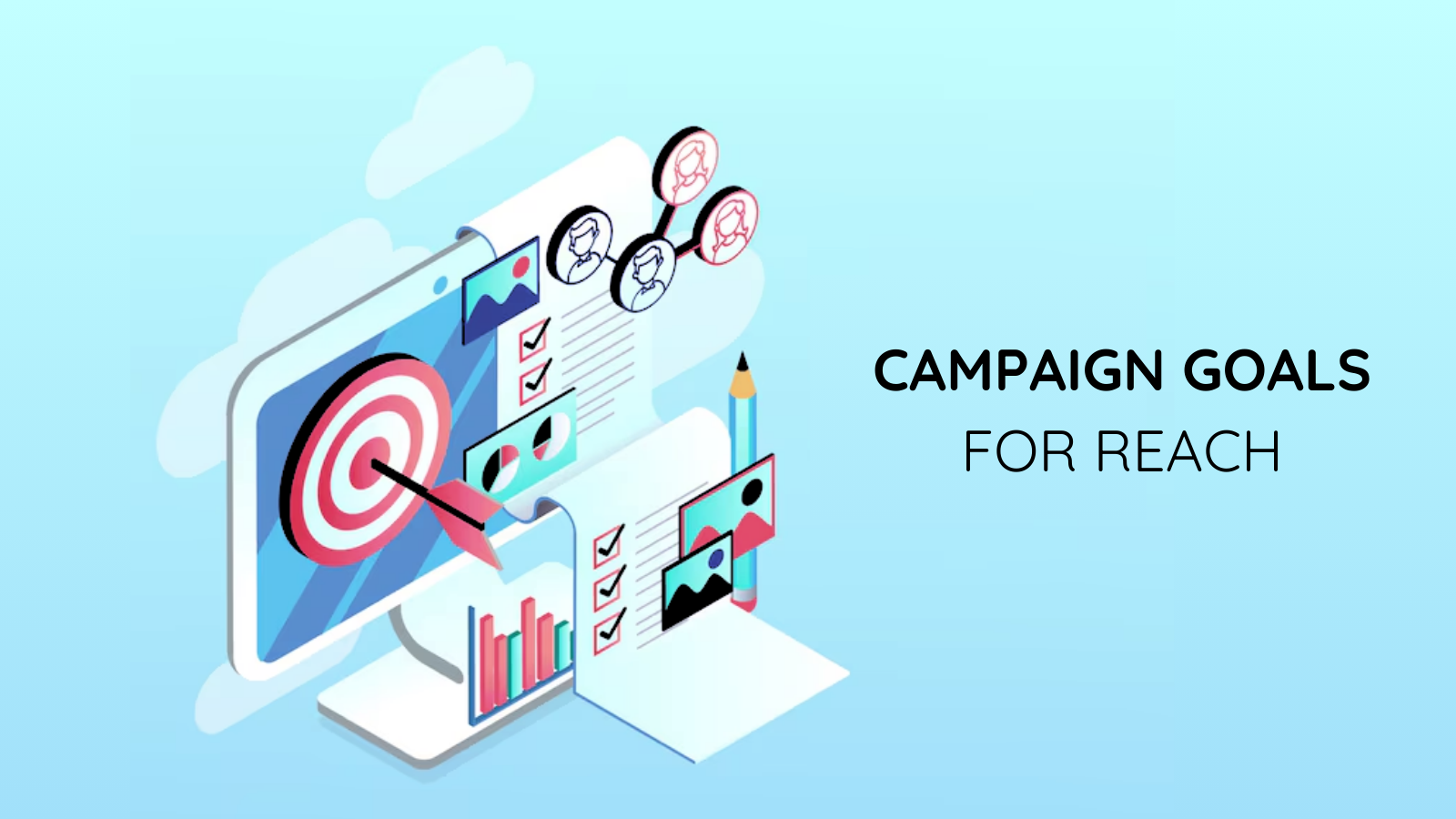7 Best Campaign Goals To Become Successful In Marketing
A thorough understanding of campaign goals is essential for organizations of all sizes and industries. In today’s extremely competitive world, establishing specific marketing objectives is critical when every dollar invested must generate results.
For instance, a small startup launching a social media campaign to boost brand awareness or a seasoned corporation aiming to penetrate a new market segment. With clear goals, these efforts can be focused and effective.
In this blog, we will dive into the depths of campaign goals and their importance. Furthermore, we will also explore some of its examples, such as increasing website traffic, improving conversion rates, and enhancing customer engagement. These examples will shed light on how strategic goal-setting can drive success in marketing.
Hit ‘Play’ Button & Tune Into The Blog!
What Are Campaign Goals And Why Are They Important?
Campaign goals are specific objectives a business or organization aims to achieve through its marketing efforts within a defined timeframe. These goals provide a clear direction and purpose for marketing campaigns, guiding strategies and tactics toward desired outcomes.
Marketing goals are significant because they:
- Provide Clarity: Establishing specific goals ensures that everyone involved understands what needs to be done and that marketing initiatives are aligned with company objectives.
- Measure Progress: Having defined goals enables businesses to track their progress and measure the success of their advertising objective using key performance indicators (KPIs).
- Focus Resources: Businesses can efficiently allocate their resources, including budget and time, to activities that have the best impact by setting specific goals.
- Enhance Decision-Making: Campaign goals serve as a reference point for decision-making, helping businesses prioritize tasks, choose appropriate marketing channels, and adjust strategies as required.
- Foster Accountability: Clear goals create accountability within teams, as individuals are responsible for contributing towards achieving the defined objectives.
In short, campaign goals are crucial for marketing success because they provide direction, measurement, focus, and accountability throughout the campaign’s lifecycle.
To refine your campaign strategies and draw inspiration from successful ads, try PowerAdSpy, the advanced ad intelligence tool.
Top 7 Campaign Goals Examples For Marketers
Various social media platforms offer specific campaign goals that advertisers can choose from when setting up their campaigns. For example, the Facebook campaign objective has six options to choose from. Similarly, other social media platforms also provide campaign objectives.
These objectives are crafted to align with different stages of the marketing funnel and cater to various business objectives. Here are some typical campaign objectives offered by social media platforms:
Brand Awareness
The brand awareness objective focuses on increasing the visibility and recognition of a brand among the target audience. Advertisers aim to maximize reach and impressions to increase brand recall.
Campaign goals aimed at building brand awareness involve ensuring that consumers recognize and recall a particular brand. It includes creating familiarity with the brand’s name, logo, or products so that consumers can identify it easily. Establishing brand awareness is crucial in marketing as it builds customer trust and encourages repeat engagement. Well-known brands have the advantage of attracting and retaining customers more effortlessly.
Various well-known brands have leveraged brand awareness campaigns to enhance visibility and strengthen consumer relationships. Among them are industry giants such as Coca-Cola, Apple, and Nike, whose innovative campaigns have left an indelible mark on the marketing landscape.
- Coca-Cola’s “Share a Coke” Campaign: Coca-Cola’s innovative “Share a Coke” campaign replaced its iconic logo with famous names and phrases, encouraging consumers to share personalized bottles with friends and family.
- Apple’s “Get a Mac” Ads: Humorous ads personified Mac and PC, emphasizing Mac’s superiority. They reinforced Apple’s innovative brand image and distinguished it from competitors.
- Nike’s “Just Do It” Campaign: Nike’s iconic slogan inspired athletes globally. Through storytelling and athlete endorsements, Nike built brand awareness and became a leading athletic brand.
Lead Generation
Lead generation campaigns collect information from potential customers interested in the product or service.
Businesses use incentives like exclusive content or discounts to encourage users to share their information and engage further. Typically, advertisers utilize lead forms or sign-up forms to capture this user data efficiently.
However, advertisers may encounter confusion when crafting effective advertising campaigns. In such instances, utilizing ad analytics tools like PowerAdSpy proves invaluable. These tools empower advertisers to discover lead-generation ads across diverse platforms, niches, and brands, aiding in refining their strategies and boosting campaign effectiveness.
Traffic
Campaign goals to increase traffic involve attracting users to take specific actions, such as exploring product offerings, engaging with informative content, or signing up for newsletters. For example, websites where users can pay for research paper writing often rely on targeted content marketing to drive high-intent academic traffic.
By optimizing ad content and targeting, businesses can draw relevant traffic likely to convert into leads or customers. Additionally, SEO-optimized content aligns ad content with relevant keywords and search intent, improving organic search visibility and increasing traffic.
To enhance advertising campaigns, conducting ad analysis of ads running across various platforms and within your niche is crucial. Utilizing ad spy tools like PowerAdSpy allows marketers to obtain valuable insights into successful ad strategies, including keyword usage, messaging tactics, and audience targeting strategy.
How PowerAdSpy Helps To Achieve Campaign Goals?
Defining campaign objectives is crucial for effective marketing strategies. Ad intelligence tool like PowerAdSpy prove invaluable, offering insights into market trends and competitors’ actions. This can empower marketers to analyze competitors, uncover insights, identify top-performing creatives, and optimize campaigns.
Furthermore, PowerAdSpy offers unrivaled access to ad intelligence, with a massive database of over 500 million ads from 100+ countries and 10+ platforms. Its advanced filters, which include a call to action, country, ad position, and type, simplify the search process.
In addition, PowerAdSpy’s unique AI search functionality allows users to narrow their advertising search, allowing advertisers to find the most relevant ads based on specified keywords and terms.
For instance, if you’re looking for Facebook ad campaign objectives related to dogs, enter the keyword “dogs” into PowerAdSpy’s search bar. The tool will retrieve all relevant Facebook ad campaigns related to dogs.
Moreover, PowerAdSpy offers functionality to save ad landing pages, enabling marketers to analyze and glean insights from successful campaigns. The bookmark feature allows users to save favorite ads for future reference or creative inspiration.
Elevate your campaigns with PowerAdSpy, start now to access powerful insights and optimize your ads!
Engagement
Campaigns aimed at boosting social media engagement are pivotal components of modern marketing strategies, with their primary goals centered on fostering meaningful interactions with audiences and cultivating vibrant communities.
To achieve their campaign goals, brands can actively engage with their audience through various avenues like responding to comments, conducting surveys, and hosting competitions. These initiatives not only encourage active participation but also contribute to the development of strong brand communities.
Illustrating this approach are successful campaigns like Starbucks’ #RedCupContest, which invited customers to share festive cup designs, thereby driving engagement and advocacy.
Similarly, Airbnb’s #LiveThere campaign highlighted genuine travel experiences, nurturing a sense of community and connection among users.
Additionally, GoPro’s #GoProChallenge encouraged users to share action-packed videos, promoting creativity and user-generated content creation.
Reach
The goal of a reach objective in a marketing campaign is to maximize the visibility of any brand by expanding its exposure to as many users as possible. Expanding reach is fundamental in marketing as it amplifies the visibility and exposure of your brand, content, or message to a broader audience.
To accomplish this goal, businesses can employ various strategies. Regularly posting across diverse platforms and engaging with trending topics can amplify reach. Furthermore, collaborating with influencers who possess a significant following and relevance to your target audience can broaden the reach of your campaign even further.
App Installs
App promotion campaigns are crucial for businesses heavily reliant on mobile apps for delivering products or services. With the increasing competition in the mobile app market, these campaigns play a vital role in ensuring the app’s visibility and success.
By leveraging various tactics such as app store optimization, paid advertising, influencer marketing, app launch events, and referral programs, businesses can attract new users, drive app installs, and maintain a competitive edge in the marketplace.
Examples of Successful App Promotion Campaigns:
Uber’s Referral Program: Uber incentivizes users to refer new users by offering ride credits or discounts to both parties upon their first ride.
Pokémon GO’s Launch Event: The highly anticipated launch event of Pokémon GO generated massive buzz worldwide with its innovative gameplay and social features.
TikTok’s Influencer Partnerships: TikTok collaborated with popular influencers to showcase its unique video-sharing capabilities.
Sales
A sales campaign is a strategic initiative that aims to achieve specific sales goals within a defined timeframe. It involves implementing targeted sales activities, such as promotions and outreach efforts, to increase revenue, acquire new customers, or promote specific products or services.
However, it’s crucial to remember that effective sales campaigns should not solely focus on pushing products or services aggressively. Instead, they should prioritize providing value to the customer. Balancing sales messages with valuable, engaging content that addresses prospects’ questions and pain points is essential.
Read More
Facebook Ad Campaign Objectives- Why Businesses Use Them?
10 Best Strategies For Effective Advertising- The Game Changer
Facebook Campaign Objectives: Which One Should I Choose?
Why Every Business Needs A Full Funnel Marketing Strategy?
Unlock The Secrets To Successful Ad Objectives That Drive Results
How To Set Campaign Goals?
Setting campaign objectives is crucial to keeping your efforts on track. Here’s a step-by-step strategy for establishing functional campaign goals:
Understand Your Objectives: Before setting goals, clarify the purpose of your campaign. Are you looking to increase brand awareness, drive sales, generate leads, or something else? Understanding your objectives will guide the goal-setting process.
Make Goals Specific: Ensure your goals are specific, measurable, achievable, relevant, and time-bound (SMART). For example, instead of saying “increase sales,” specify the percentage increase you aim to achieve within a specific timeframe.
Consider Your Audience: Understand your target audience’s needs, preferences, and behaviors. Your goals should align with what you want to achieve with this specific audience segment.
Prioritize Goals: Determine which goals are most critical for your campaign’s success. While you may have multiple objectives, prioritize them based on importance and feasibility.
Set Quantifiable Metrics: Determine key performance indicators (KPIs) to track progress toward your objectives. These could include metrics like website traffic, conversion rates, social media engagement, and email open rates.
Establish Benchmarks: Review past campaign performance or industry standards to set realistic benchmarks for your goals. It will help you gauge whether your campaign is performing as expected.
Closing Thoughts
At the heart of every triumphant marketing venture lies a clear understanding and definition of campaign goals.
From boosting brand awareness to driving sales and fostering customer engagement, setting well-defined campaign objectives provides direction and accountability. It ensures alignment with broader business objectives, maximizes resource allocation, and informs decision-making.
By leveraging the Facebook ads spy tool, PowerAdSpy, and embracing strategic goal-setting practices, marketers can navigate the complexities of the digital landscape confidently, driving meaningful results and staying ahead of the competition.










